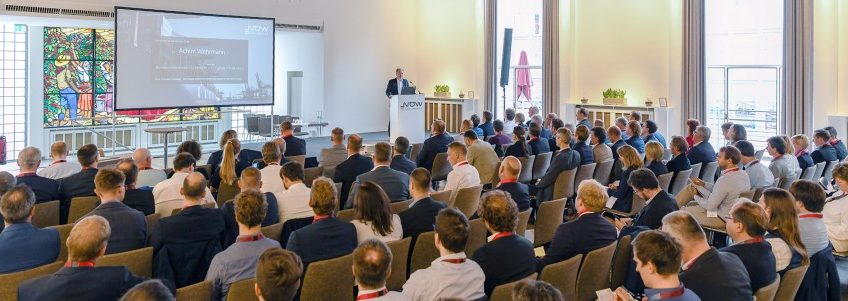Electrification of ports: between smart grids, shore power and electric mobility Ports as fields of application for hydrogen and fuel cells Ports as PtX fuel hubs for ships, trucks and as a transport commodity
Berlin/Hamburg, 4 September 2019 – In the framework of its “Zero Emission Shipping” symposium on 4 September 2019 in Hamburg, NOW GmbH successfully continued its event series on alternative shipping fuels and maritime future energies. The key focus was a holistic approach to ports as integrated energy systems with the aim of shaping them for the future through smart grids, shore power, electric mobility, hydrogen, fuel cells and power-to-x technology. With the broad participation of experts from the maritime industry, discussion topics were the possible energy system opportunities that arise for port locations, as well as the potential lying in future maritime energies for the expansion of the traditional port industry.
Firstly the electrification of the ports themselves was considered. The construction of an integrated port network, in which storage and supply cycles of renewable electricity for port services, shore power and charging infrastructures of electrically-powered port vehicles can be intelligently controlled, offers significant advantages for the sustainability of a port location. Here electricity produced from renewable energies can be directly fed into the port network and also stored. The clean electricity serves as an energy source for terminals, logistics centres, industry, intralogistics, shore power for ships and electrically-powered vehicles in and around the port.
The development of a functioning hydrogen industry was also introduced as another possibility, which puts ports in a position to generate, store and distribute hydrogen as an energy source and for mobility applications. The hydrogen is produced through electrolysis, which then is used directly as a fuel or can be processed further. Power-to-x fuels for ships, trucks and as a transport commodity play an important role here for the expansion of traditional port business and in the transition to climate-neutral heavy duty mobility.
In shipping, measures to reduce harmful emissions currently take priority. Proven measures are those which simultaneously exhibit potential for greenhouse gas reduction, as they are particularly appropriate for achieving international climate goals. LNG as a shipping fuel already today offers a technologically-mature alternative: already with fossil liquid natural gas (LNG), harmful emissions can be drastically reduced and greenhouse gases cut. As it was shown at the symposium, a still greater compensation can be achieved, when the share of renewable methane increases. The Federal Ministry of Transport and Digital Infrastructure (BMVI) invests in the development of clean technologies through various funding programmes and since 2017, specifically supports the equipping and retrofitting of seagoing vessels for LNG propulsion. Various shipping companies presented their subsidized new-build and conversion projects. The latest R&D results on the use of renewable methane were also presented. It could be demonstrated that alternative drive and energy systems are technically deployable and that emissions in shipping can already now be massively reduced. Ports, for their part, are assuming a key role in supplying the shipping sector with renewable energies of the future.


